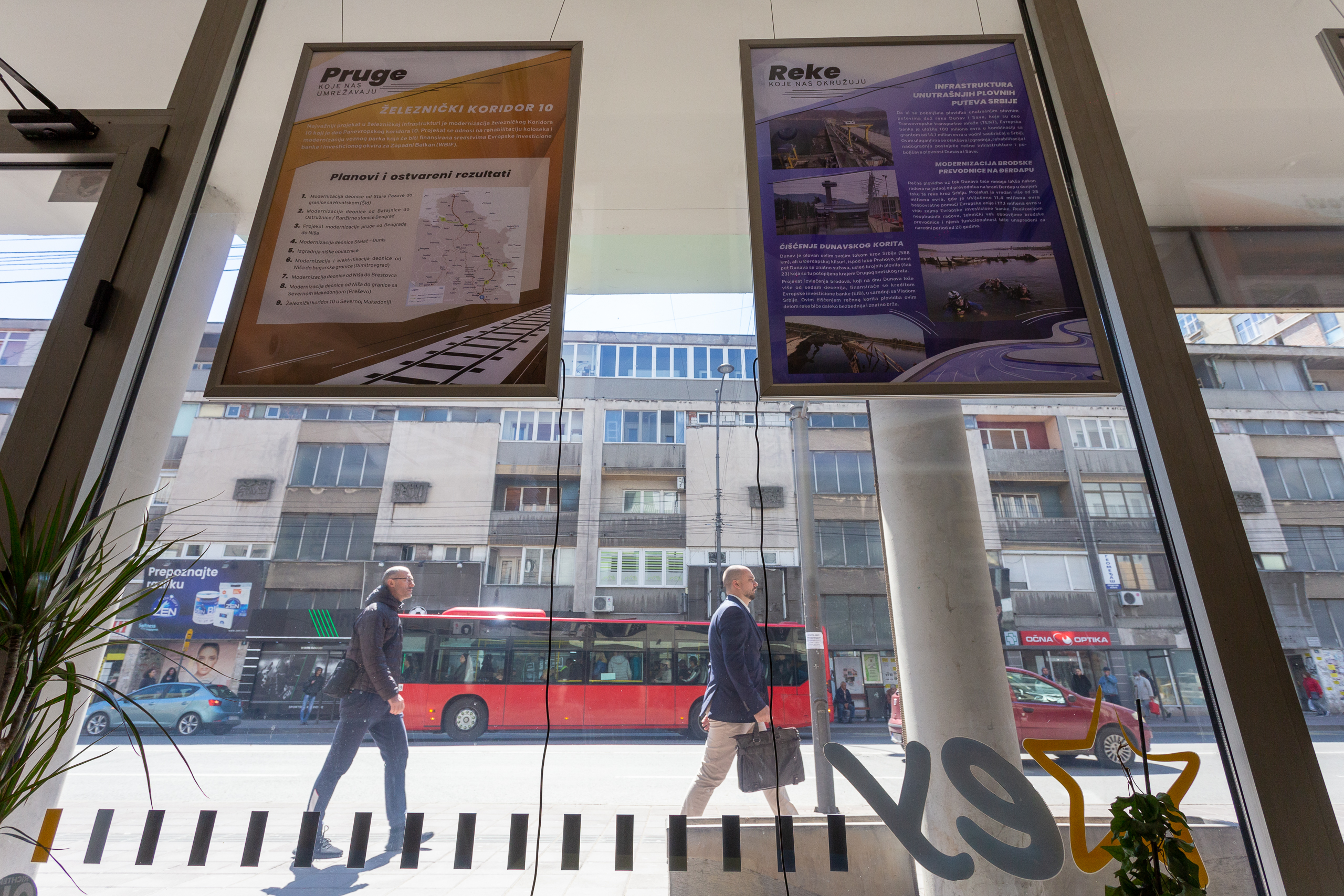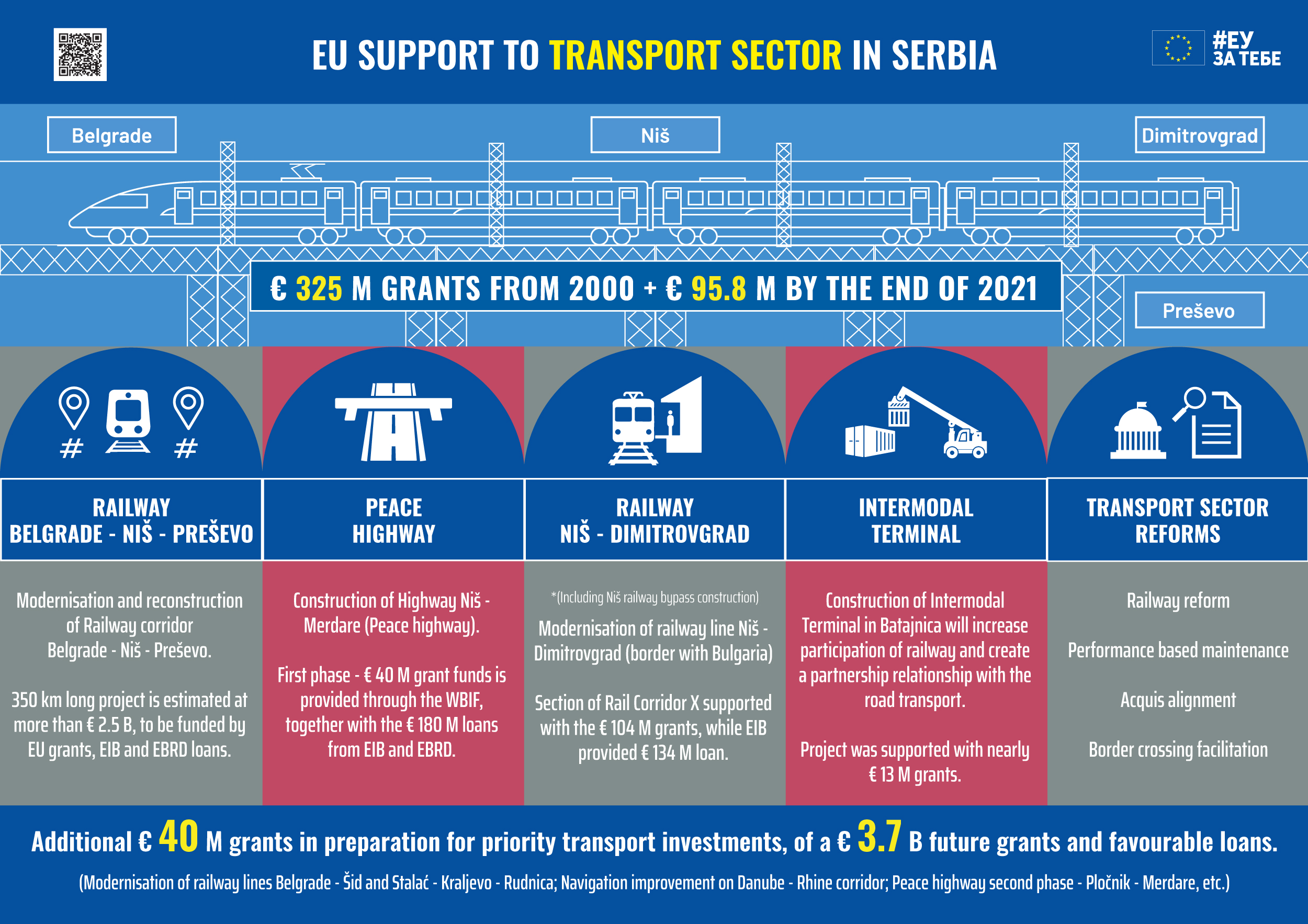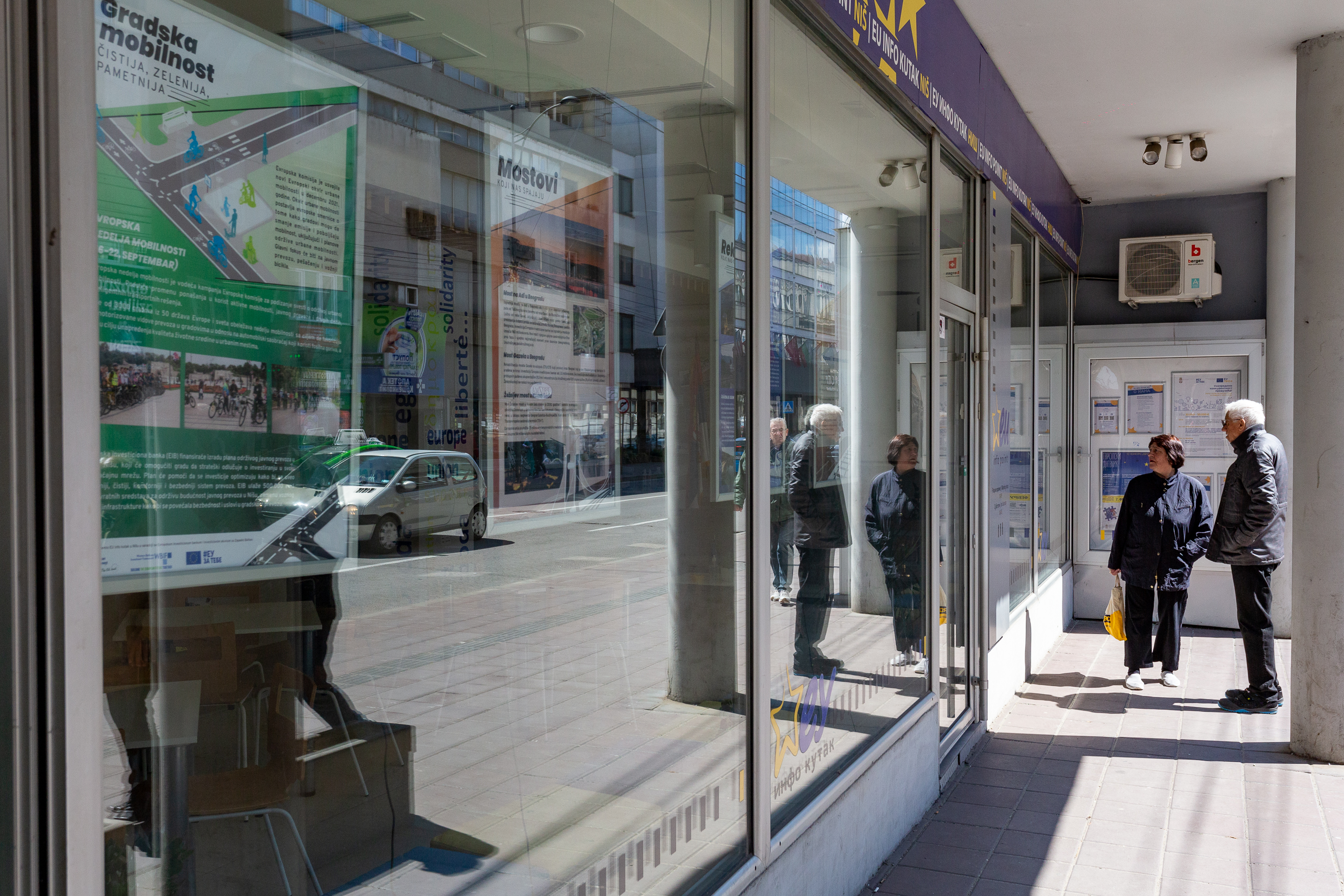The citizens of Niš will soon have sustainable and better regulated public transport thanks to the agreement that the city administration signed with the European Investment Bank (EIB).
This agreement creates conditions for the introduction of a more efficient transport system, as well as for the removal of freight traffic from the existing intercity railway corridor. Those activities are part of the EU support to transport sector in Serbia.

In an effort to bring the citizens of Niš closer to the development priorities for Serbia in the transport sector, the exhibition titled “EU support for the transport sector in Serbia” was set up on the premises of the EU Info Point in Niš, 5 Voždova Street.
The exhibition showcases key investment projects such as road traffic reform, the introduction of modern and cost-effective infrastructure maintenance practices, and support for road safety. The citizens of Niš will have the opportunity to learn more about the planned investments along Corridor 10 in the area of road and railway traffic, as well as about the works on the modernisation of inland waterways infrastructure in Serbia.
One of the particularly compelling and important stories featured in the exhibition is about a project of pulling out shipwrecks that have been lying on the bottom of the Danube for more than seven decades, financed via a loan from the European Investment Bank (EIB) in cooperation with the Serbian government.

Alessandro Bragonzi, head of the EIB’s Regional Office for the Western Balkans, explained that the EIB had financed the transport sector in Serbia with 2.3 billion euros and that the results can be seen in a number of new roads, bridges, tunnels, and railways. He added that “EIB support also includes grants and technical assistance for project preparation, such as the preparation of a sustainable urban mobility plan in Niš.” The plan will enable the development of an investment framework that will provide more efficient, simpler, more comfortable, safer, and greener urban transport.
Apart from the aforementioned, the citizens of Niš will also be interested in the segment on the railway Corridor 10 and the modernisation of the Belgrade-Niš and Niš-Preševo-Dimitrovgrad railway lines, as well as the long-announced Niš bypass.
EU-funded transport projects in Serbia aim to improve transport connectivity and thus improve economic integration within the region and between the region and the EU. In addition, the EU’s efforts in the transport sector are largely focused on market opening and the implementation of EU standards. EU-funded projects have significantly contributed to the railway reform process, the introduction of modern and most cost-effective practices for maintaining road transport infrastructure, and the introduction of a river information system to improve navigability along Serbia’s inland waterways.
Since 2000, EU support to the transport sector in Serbia has reached more than 420 million euros in grants. In addition, over 40 million euros of EU grants have been set aside for the preparation of strategic priority investments in the field of transport, totalling over 3.7 billion euros, which will be realised by combining EU grants and favourable loans in the future.





